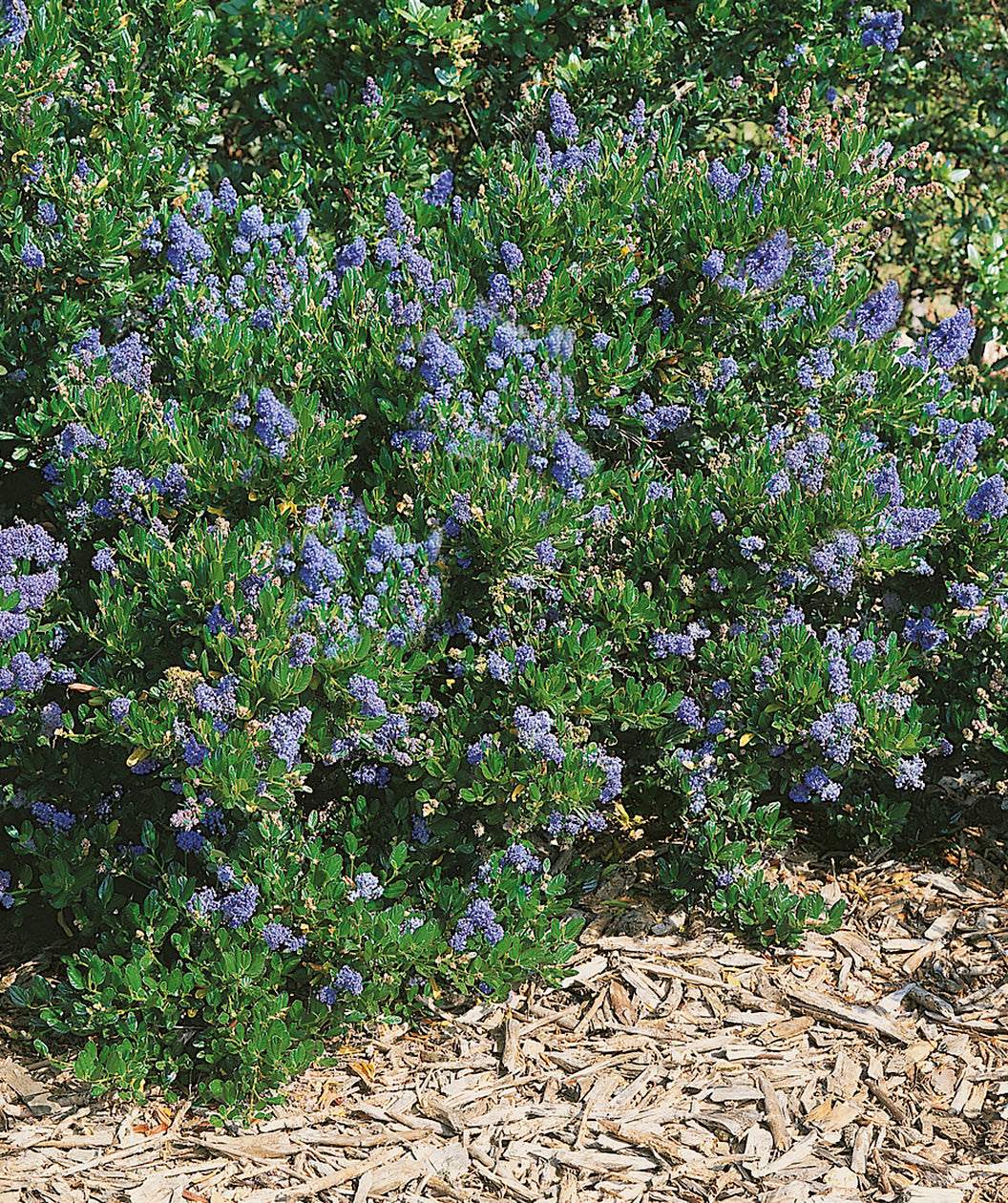STUNNING INDIGO BLOOMS OVERWHELM THIS EVERGREEN SHRUB
FEATURES:
- Profuse flower clusters of brilliant indigo hues appear in late spring to early summer
- Heavily fragrant blooms attract bees, butterflies, birds, and hummingbirds to your landscape
- Dark green, shiny foliage provides evergreen screening all year long
- Deer resistant and extremely drought tolerant
- Ideal when planted as a flowering hedge, down banks or slopes or in a coastal garden, where sea-spray is common
-
Hand Selected, Fresh from the Grower
- Ships in a plant-safe designed box
Photo Credit: ©Nova-Photo-Graphik GmbH® Victoria California Lilac
Growth Facts
- Hardiness Zone: 7-10
- Mature Height: 6-8' tall
- Mature Width: 10-12' wide
- Exposure: Full Sun
- Spacing: 8-10' apart
STUNNING INDIGO BLOOMS OVERWHELM THIS EVERGREEN SHRUB
FEATURES:
- Profuse flower clusters of brilliant indigo hues appear in late spring to early summer
- Heavily fragrant blooms attract bees, butterflies, birds, and hummingbirds to your landscape
- Dark green, shiny foliage provides evergreen screening all year long
- Deer resistant and extremely drought tolerant
- Ideal when planted as a flowering hedge, down banks or slopes or in a coastal garden, where sea-spray is common
-
Hand Selected, Fresh from the Grower
- Ships in a plant-safe designed box
Photo Credit: ©Nova-Photo-Graphik GmbH® Victoria California Lilac
Growth Facts
- Hardiness Zone: 7-10
- Mature Height: 6-8' tall
- Mature Width: 10-12' wide
- Exposure: Full Sun
- Spacing: 8-10' apart
Why plant Victoria California Lilac?
Did you know that blue is the rarest color to find in the landscape? However, if you plant the Victoria California Lilac in your landscape, you won't have any such issues! In late spring, we are graced with an abundance of vibrant indigo hues that last well into summer. These blooms envelope the shrub, almost to the point that's all that can be seen, and the fragrance is out of this world. They also do wonders inviting birds, and pollinators such as bees, butterflies and hummingbirds to dance across your landscape. The flowers truly pop against the dark green, evergreen foliage. For stunning color, evergreen screening and pollinators galore, plant the Victoria California Lilac in your landscape today!
How to use Victoria California Lilac in the landscape?
This vibrant shrub will make you the talk of the town during the spring and summer months! Offering blooms galore and low maintenance, there's not much more you could ask for. These shrubs do wonderfully when utilized in a mass planting, as a specimen plant, to create hedges or screens, and many more locations. As a Californian native, it can also handle salt spray without any concern! The Victoria California Lilac offers tolerance to deer, drought, rabbits, and more making them not only beautiful, but pest free!
Planting Zones
Hardiness Zone: 7-10
How To Plant Victoria California Lilac
If you are interested in planting the Victoria California Lilac, there are just a few things you need to know. For starters, you will want to find a location that offers full sun. Partial shade locations are a possible home for the Lilac, however, then you are at the risk of lighter blooms. They are adaptable to clay, loam, and sandy soil types, while also offering tolerance to urban pollution, garnering multiple possible locations for planting!
How To Water
When first planted, water your new California Lilac deeply and thoroughly. Consistent watering during the first growing year is imperative. Once established, it is very drought tolerant.
How To Fertilize
When planting, you should first fertilize your Victoria California Lilac with the Bower & Branch Elements Starter Plant Food. For ongoing care, you should reapply each spring, before the new growth begins to emerge. Follow this schedule for the life of the plant and you can expect a long, healthy, and happy life for your Victoria California Lilac!
How To Prune
The Victoria California Lilac is not only beautiful but rather care free in that it doesn't require much maintenance! In fall, remove any dead or damaged branches along with any old blooms - this will help with the growth the following year. You may also remove any bare branches inside the shrub, this will promote better health and growth of the shrub by allowing space and appropriate air flow through the plant. You may prune for shape during this time as well, however that is only if you choose to do so.





